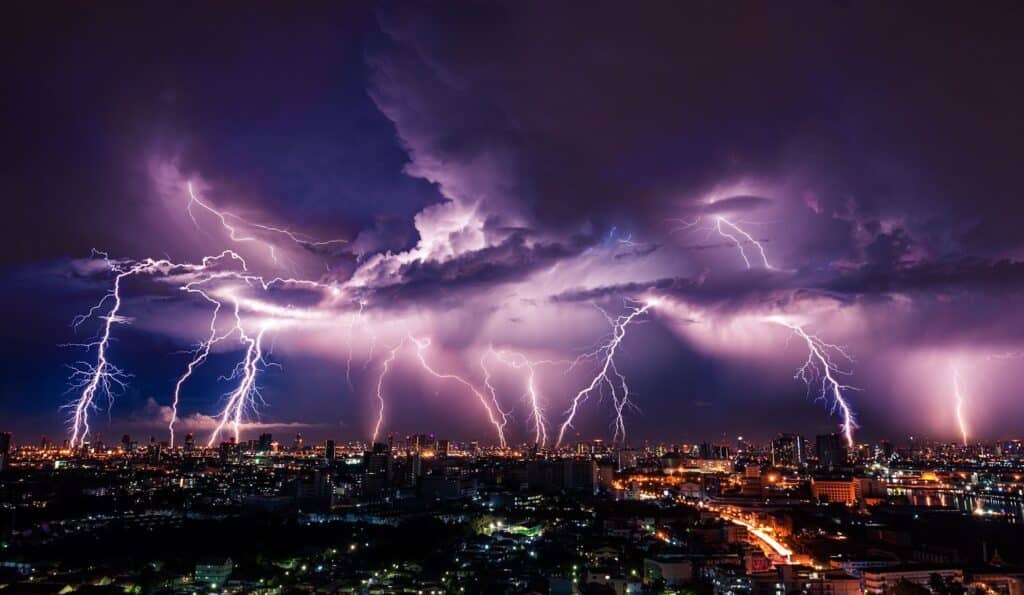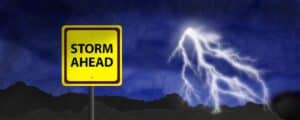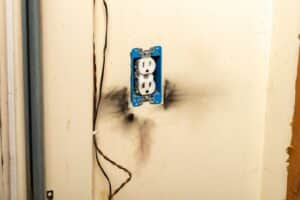When a severe thunderstorm warning is issued, don’t let it take you by surprise — it’s time to buckle down and follow these essential preparation steps to stay safe.
Have you ever considered how to best prepare for a severe weather threat? When thinking about natural disasters, earthquakes, tornadoes, and flash floods probably come to mind before thunderstorms, but these storms can be equally dangerous to you and your property.
Taking proactive steps like creating an emergency kit and developing a communications plan is crucial. If you’re new to disaster preparedness or looking to refresh your knowledge, this blog will walk you through the fundamental steps to ensure you’re ready for any thunderstorm.
Thunderstorms 101
Before diving into the preparation steps, let’s understand what thunderstorms are and the scope of potential dangers they bring. A thunderstorm is characterized by the presence of lightning and thunder. It includes heavy rainfall, strong winds, and sometimes hail. Thunderstorms occur individually, in clusters, or in lines and last anywhere from less than an hour to several hours.
The dangers of thunderstorms

Thunderstorms are more than a dramatic display of nature’s power — all thunderstorms are threatening, and they bring significant risks to both people and property. Here are some of the main dangers that accompany a severe thunderstorm warning:
Lightning
Each year in the United States, lightning strikes injure an average of 300 people and result in 80 fatalities. Although most lightning victims survive, they often suffer from long-term, debilitating symptoms such as chronic pain, hearing or vision loss, memory loss, dizziness, irregular heartbeat, muscle spasms, and difficulty sleeping. Thoughtful lightning storm preparation is crucial — always stay inside during a lightning storm to keep yourself safe.
Flooding
Flooding is another severe weather threat posed by thunderstorms. Heavy rain can easily lead to flash floods that escalate without warning. Floodwaters are dangerous because they easily sweep away cars, destroy buildings, and lead to drowning. Proper drainage will help protect your home from water damage during flooding.
Hail
Hail is another equally dangerous aspect of thunderstorms. Hailstones, thick balls of ice, vary in size from small pellets to giant softballs. These chunks of ice pose enormous threats when hurled through the air at speeds of up to 100 miles per hour. Ice projectiles cause hefty damage to vehicles, roofs, windows, crops, and more. Keep your car inside a garage during hail storms and install hail-resistant roofing materials if you’re in a hail-prone area.
Tornadoes
Strong winds are associated with thunderstorms, and tornadoes are sometimes even produced. Tornadoes are among the most destructive natural phenomena and are capable of demolishing buildings, uprooting trees, and sending large objects through the air. Seek shelter immediately in a basement or lowest interior room if a tornado warning is issued.
Strong winds
Strong winds also cause a fair amount of damage, even without the presence of a tornado. Wind gusts threaten trees, power lines, or anything that’s not tied down, such as backyard furniture. Securing outdoor items and keeping your trees pruned will help protect your property in the face of strong winds.
Preparing for a thunderstorm
Preparation is the best way to minimize risks and ensure your safety in the presence of a severe weather threat. As the saying goes, “By failing to prepare, you’re preparing to fail.” Effective lightning storm preparation involves taking key steps before, during, and after a storm to keep yourself safe and reduce damage.
Before a thunderstorm
- Create a communications plan – A thunderstorm easily disrupts all power and cell signals, making communication very challenging. Establish a communication plan with your family so everyone knows what to do in case you can’t reach each other during a severe thunderstorm. Designate a safe room in your home as a meeting place and determine what to do if someone cannot reach this designated area.
- Build an emergency kit – An emergency kit will help you and your family endure a natural disaster, especially if you are trapped in your home or car for an extended period. There’s no need to overcomplicate your kit. In fact, most items for an emergency preparedness kit can be found at local stores. These items include:
- Water bottles or gallons
- Non-perishable food
- Non-prescription medication like pain relievers or allergy tablets
- Battery-powered or hand crank radio
- Flashlights
- Standard first-aid kit with ointments and band-aids
- Extra batteries
- A whistle or similar item to call for help
- Plastic sheeting and duct tape for a temporary shelter
- Emergency blanket
- Wrenches, pliers, and a pocket knife
- Manual can opener
- Local maps
- Portable chargers for cell phones
Depending on your specific needs, you might also consider including prescription medications, infant formula, baby bottles, diapers and wipes, important documents, activities for children, or pet food and pet comfort items.
- Power down your circuit breakers – Before the storm hits, turn off your circuit breakers to prevent lightning from surging through your home. This precaution also reduces the risk of electrical fires. Make sure you know the location of your circuit breaker panel and practice turning it off quickly.
- Stay tuned into weather forecasts – If the thunderstorm is severe enough, there’s a good chance your power may go out. As such, download a weather app on your phone to track the storm. Choose an app that provides real-time warnings and crowd-sourced reports to pinpoint potential danger zones.
- Keep your home up to code – Regularly inspect your roof for loose shingles and other vulnerabilities. If your home has a basement, make sure it has proper drainage to prevent flooding. These are just some of the steps to take to verify your home can handle any storm that comes its way.
During a thunderstorm
Once the storm begins, follow these steps to keep you and your family safe until it passes:
- Stay indoors – Stay inside until the storm passes and weather reports indicate that your area is safe. This reduces your chances of being struck by lightning or caught in a threatening situation. Also, keep away from windows in case they shatter.
- Avoid hazards – According to the Centers for Disease Control, about one-third of lightning strikes occur indoors. Stay clear of water and plumbing to avoid potential lightning strikes. Also, avoid using electronic devices that are plugged into an electrical outlet. Lightning causes electrical surges that can damage electronics.
- Use emergency lightning – If the power goes out, use flashlights or battery-powered lanterns instead of candles to reduce the risk of fire.
- Move to a secure shelter – Seek out a safe shelter, such as a basement or an enclosed room on the lowest floor in your house. If you live in a manufactured or mobile home, consider finding a public building offering protection during the storm.
- Pet safety – Bring all pets indoors during a thunderstorm, and. Prepare a safe space for them with their necessities. Just like humans, the disruptiveness of storms can make pets nervous. Consider using calming measures such playing soft music to calm any pet anxiety during the storm.
After a thunderstorm

Once the storm has passed, assess any visible damage, and keep yourself safe in the meantime. Proper lightning storm preparation, along with these post-storm actions, will help you resume normal life again faster.
- Wait for the all clear – City officials will alert when it’s safe to venture outside again. Wait for the all clear before heading out on your own.
- Assess damage with caution – Carefully inspect your property for damage. Watch out for power lines, broken glass, fallen trees, and other hazards. Take photos of any damage for insurance claims.
- Avoid flood waters – Steer clear of any flood waters as they may be contaminated and pose troubling health risks.
- Report hazards – Report any downed power lines, gas leaks, or other utility issues to the appropriate authorities immediately for prompt and safe resolution.
- Check on your neighbors – Community is a powerful connecting tool, especially during scary times. Make sure your neighbors are accounted for and safe, and work together to restore your community.
- Seek professional restoration – After a thunderstorm, address the devastation as quickly as possible to prevent issues such as mold or structural damage. Contact a professional storm restoration service to assess and repair any damage to your home. These professionals will help with water extraction, structural drying, mold remediation, and repairs — all in all, they’ll make sure your home is safe and habitable again.
Black Diamond Restoration is your answer for all your storm damage restoration needs
An unprompted severe thunderstorm warning is jarring, but with Black Diamond Restoration, there’s no need to worry. Our expert team is ready to assist you with comprehensive storm preparation and restoration services right when you need them. From immediate response to thorough repairs, we’ve got you covered.
Trust us to help you weather the storm safely and confidently! Contact Black Diamond Restoration today to learn more about how we can assist you in preparing for and recovering from severe thunderstorms.







